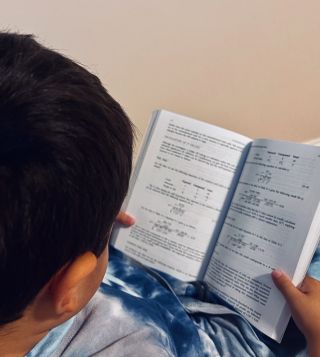Education
Celebrating Excellence: Olympic Gold to Scientific Triumph
Inspiring underrepresented youth to pursue science and healthcare.
Updated August 5, 2024 Reviewed by Lybi Ma
Key points
- STEM recognition pathways are less visible than those for athletes and performers.
- Diverse role models ensure every child finds inspiration aligned with their unique interests and talents.
- Pass the torch with enthusiasm and inspire the next generation to pursue their passions in any field.
The 2024 Summer Olympics in Paris has once again captured the world's imagination, not just for the athletic achievements on display but also for the broader cultural impact they represent. From United States dominance in swimming to jaw-dropping performances in cycling and gymnastics, these athletes' journeys to the podium reflect the universal values of human potential and perseverance.
Along with reveling in these athletic triumphs, it's also a perfect moment to reflect on the necessity to recognize and celebrate excellence in other fields, particularly in STEM—science, technology, engineering, math, and computer science. We can acknowledge our youth, particularly BIPOC females and all underrepresented identities.
The allure of competing in the Olympics starts early in the U.S. and globally. Children are mesmerized by tales of athletic heroism and the dream of standing on that podium. This early exposure often ignites a lifelong passion and fosters a culture that celebrates physical prowess and competitive spirit. Similarly, popular TV shows such as “America’s Got Talent,” “The Voice,” and others create narratives where young talent is recognized and catapulted to stardom for their unique abilities.

While pathways to acclaim for athletes and performers are well-trodden and highly visible, the routes to recognition in STEM fields, including healthcare, are less apparent.
This raises a critical question about what constitutes a "gold medal" in science and how to celebrate young scientists making a difference early on in their lives.
Many initiatives aim to increase STEM participation, persistence, and career readiness among underrepresented or underserved students. For example, North Carolina State University’s Juntos program supports Hispanic and Latino youth in North Carolina and Washington. The International Atomic Energy Agency hosts events like World Skills Day, featuring projects such as Malaysia's STREAM-clusive Project.
In the U.S., NASA's Inspires Futures for Tomorrow’s Youth (NIFTY) team updated its Role Model Strategies Guide to incorporate gender-equitable and culturally responsive practices. These revisions are designed to actively encourage underrepresented youth, particularly girls and minority students, to pursue careers in STEM fields. The guide now includes strategies for engaging diverse role models, promoting inclusive representation in STEM, and addressing cultural and gender biases, to inspire a broader range of students to explore STEM careers.
Girls Who Code is a nonprofit dedicated to closing the gender gap in tech jobs by 2030. Women earn only 20 percent of computer science and 22 percent of engineering undergraduate degrees in the U.S. To address this, the organization offers programs like Summer Camps, After-School Clubs, College Loop, and Technical Interview Prep, which equip young women and nonbinary individuals with essential coding skills. Beyond technical training, Girls Who Code creates a supportive community to help overcome cultural barriers, aiming to increase alumni success in tech careers.
Despite some interest in STEM, significant barriers remain. According to the Walton Family Foundation, 75 percent of Gen Z youth are interested in STEM, but only 29 percent list a STEM role as their first choice.
Schools often struggle to provide adequate support, resulting in minimal exposure to core STEM concepts, especially for female students. This lack of support and exposure leads to diminished interest in pursuing STEM careers.
In academia and research, prestige is often associated with positions at elite institutions like Harvard University or Nature publications. However, true impact transcends these traditional markers, embodied by individuals whose work has transformed the world. For instance, Kizzmekia Corbett, whose pioneering research was crucial in developing the Moderna COVID-19 vaccine, and her work in immunology has been instrumental in the global fight against the pandemic. Similarly, Ayanna Howard has broken new ground in robotics and artificial intelligence. Her advancements in autonomous systems and human-robot interaction have pushed the boundaries of technology. In healthcare, Natalia Rost, the president elect of the American Academy of Neurology(AAN), exemplifies leadership and innovation. Her guidance steers the field toward new horizons in brain health research and clinical care. These contemporary role models embody the definition of success in STEM.
Athletes like Simone Biles and Jordan Chiles have become symbols of collaborative spirit. Just as in sports, where the journey to success can be thrilling and demanding, academia is marked by intense competition and moments of solitude. It’s crucial to spotlight and celebrate role models who exemplify collaboration.
Not every child will excel in sports or the performing arts. Diversity in role models also ensures that every child can find inspiration that resonates with their interests and talents.
It is encouraging to imagine a world where scientific achievements receive the same media spotlight as Olympic victories—beyond the annual Nobel Prize. Then breakthroughs in AI, biotechnology, or space exploration would dominate media news and inspire celebrations in schools with the same enthusiasm reserved for sports icons.
It is time to pass the torch with enthusiasm to the next generation to pursue their passions, whether they lead to the sports arena, a performance stage, the laboratory, or the mental health center.




